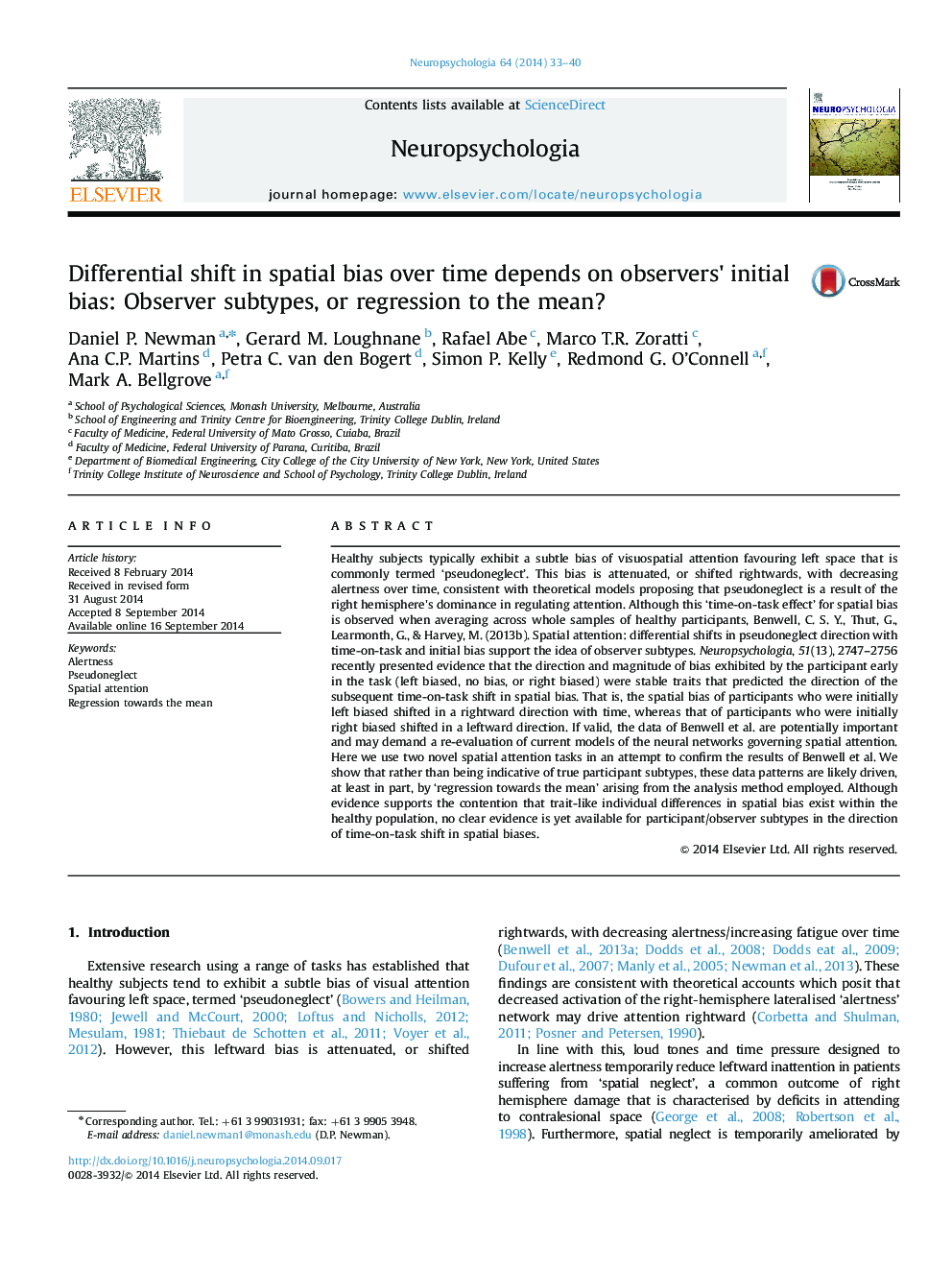| کد مقاله | کد نشریه | سال انتشار | مقاله انگلیسی | نسخه تمام متن |
|---|---|---|---|---|
| 7320684 | 1475589 | 2014 | 8 صفحه PDF | دانلود رایگان |
عنوان انگلیسی مقاله ISI
Differential shift in spatial bias over time depends on observers׳ initial bias: Observer subtypes, or regression to the mean?
دانلود مقاله + سفارش ترجمه
دانلود مقاله ISI انگلیسی
رایگان برای ایرانیان
موضوعات مرتبط
علوم زیستی و بیوفناوری
علم عصب شناسی
علوم اعصاب رفتاری
پیش نمایش صفحه اول مقاله

چکیده انگلیسی
Healthy subjects typically exhibit a subtle bias of visuospatial attention favouring left space that is commonly termed 'pseudoneglect'. This bias is attenuated, or shifted rightwards, with decreasing alertness over time, consistent with theoretical models proposing that pseudoneglect is a result of the right hemisphere׳s dominance in regulating attention. Although this 'time-on-task effect' for spatial bias is observed when averaging across whole samples of healthy participants, Benwell, C. S. Y., Thut, G., Learmonth, G., & Harvey, M. (2013b). Spatial attention: differential shifts in pseudoneglect direction with time-on-task and initial bias support the idea of observer subtypes. Neuropsychologia, 51(13), 2747-2756 recently presented evidence that the direction and magnitude of bias exhibited by the participant early in the task (left biased, no bias, or right biased) were stable traits that predicted the direction of the subsequent time-on-task shift in spatial bias. That is, the spatial bias of participants who were initially left biased shifted in a rightward direction with time, whereas that of participants who were initially right biased shifted in a leftward direction. If valid, the data of Benwell et al. are potentially important and may demand a re-evaluation of current models of the neural networks governing spatial attention. Here we use two novel spatial attention tasks in an attempt to confirm the results of Benwell et al. We show that rather than being indicative of true participant subtypes, these data patterns are likely driven, at least in part, by 'regression towards the mean' arising from the analysis method employed. Although evidence supports the contention that trait-like individual differences in spatial bias exist within the healthy population, no clear evidence is yet available for participant/observer subtypes in the direction of time-on-task shift in spatial biases.
ناشر
Database: Elsevier - ScienceDirect (ساینس دایرکت)
Journal: Neuropsychologia - Volume 64, November 2014, Pages 33-40
Journal: Neuropsychologia - Volume 64, November 2014, Pages 33-40
نویسندگان
Daniel P. Newman, Gerard M. Loughnane, Rafael Abe, Marco T.R. Zoratti, Ana C.P. Martins, Petra C. van den Bogert, Simon P. Kelly, Redmond G. O'Connell, Mark A. Bellgrove,